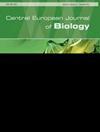Lectin Treatment Affects Malignant Characteristics of TPC-1 Papillary Thyroid Cancer Cells
引用次数: 1
Abstract
Objective: Abnormal glycosylation is a universal aspect of cancer cells. The altered glycosylation pattern has been originated from changings in expression of glycosylation enzymes which are up-regulating in reply to some oncoproteins in the biosynthetic pathway of glycans. In this study, it was aimed to show the presence of terminal α-2,3, α-2,6 sialic acid and α-1,6/α-1,2 fucose motifs in TPC-1 papillary thyroid cancer cells. Also it was aimed to examine the changes in viability and mobility of the cells after exogenously specific lectin treatment. Materials and Methods: In this study, the presence of terminal sugar residues in glycan chains on the cell surface was demonstrated using lectin histochemistry and lectin blotting techniques in TPC-1 cells. The changes in the cell viability and proliferation after lectin treatment were assessed using the WST-1 test. The Changes in the cell mobility after lectin treatment, however, were assessed using the wound healing test. Results: α-2,3, α-2,6 sialic acid and α-1,6/α-1,2 fucose motifs were widespread in the surface of TPC-1 cells. MAL-II (Maackia amurensis Lectin II) treatment increased the cell proliferation and mobility of TPC-1 cells. Although SNA (Sambucus nigra Aglutinin) and AAL (Aleuria aurantia Lectin) treatment did not significantly affect the cell proliferation, SNA and AAL treatment supported the mobility of TPC-1 cells. Conclusion: Lectin treatment affect cancerous properties differently depending on the cell type. Also lectin treatment can support the malignant behaviour of cancer. For this reason, it is necessary to understand the mechanisms of the lectin effect on the cancer cells.凝集素治疗影响TPC-1甲状腺乳头状癌细胞的恶性特征
目的:糖基化异常是肿瘤细胞的一个普遍现象。糖基化模式的改变源于糖基化酶表达的变化,糖基化酶在多糖的生物合成途径中响应某些癌蛋白而上调。本研究旨在证实TPC-1乳头状甲状腺癌细胞中存在末端α-2,3、α-2,6唾液酸和α-1,6/α-1,2聚焦基序。同时,研究外源特异性凝集素处理后细胞活力和移动性的变化。材料和方法:在本研究中,利用凝集素组织化学和凝集素印迹技术在TPC-1细胞中证实了细胞表面聚糖链末端糖残基的存在。采用WST-1检测凝集素处理后细胞活力和增殖的变化。然而,使用伤口愈合试验评估凝集素处理后细胞流动性的变化。结果:α-2,3, α-2,6唾液酸和α-1,6/α-1,2聚焦基序广泛存在于TPC-1细胞表面。MAL-II (Maackia amurensis凝集素II)处理增加了TPC-1细胞的增殖和移动性。虽然SNA (Sambucus nigra凝集素)和AAL (Aleuria aurantia凝集素)处理对TPC-1细胞的增殖没有显著影响,但SNA和AAL处理支持TPC-1细胞的流动性。结论:凝集素治疗对肿瘤性质的影响随细胞类型的不同而不同。此外,凝集素治疗可以支持癌症的恶性行为。因此,有必要了解凝集素对癌细胞的作用机制。
本文章由计算机程序翻译,如有差异,请以英文原文为准。
求助全文
约1分钟内获得全文
求助全文

 求助内容:
求助内容: 应助结果提醒方式:
应助结果提醒方式:


